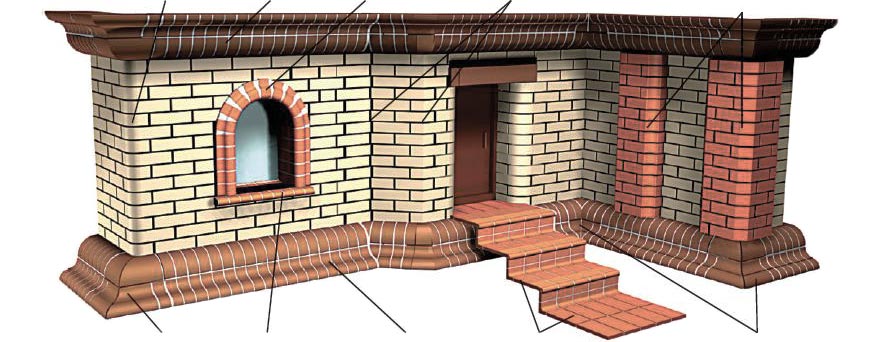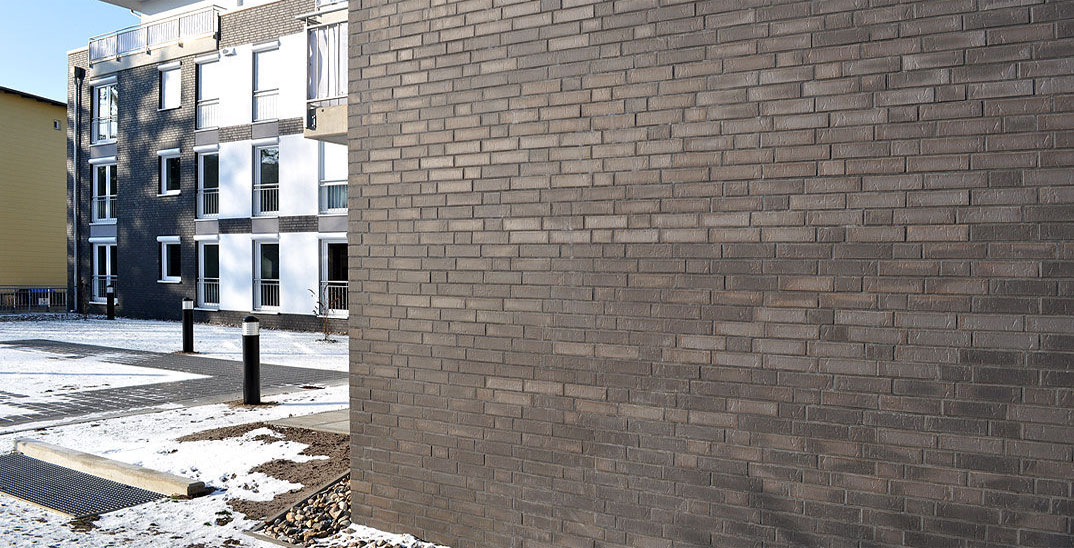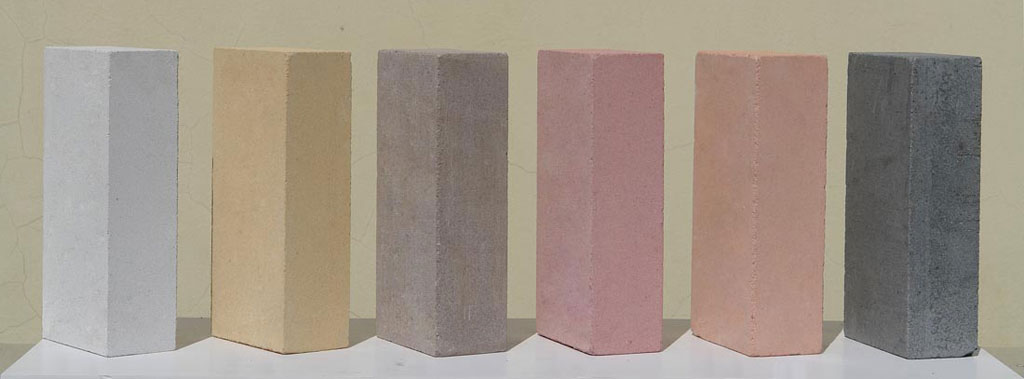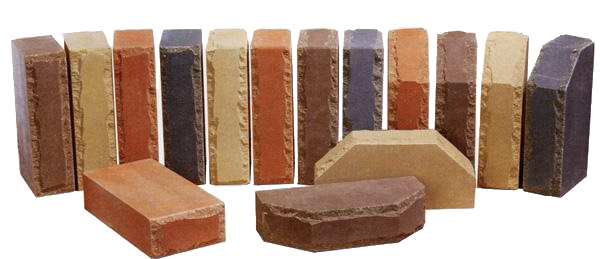Facing brick. Classification
ЧA person who chooses facing brick to decorate the house, waiting on today's market of building materials rather a lot of trouble - it's too great a choice. Although great opportunities: a brick wall can give and brutal, and romantic and ethnic look. The only thing is to choose the right finishing material.
First of all, we must realize that in today's construction there are two kingdoms – common brick and facing brick
.Common bricks are used to build the body of the wall, while facing bricks are used to finish the outer surface of the wall. Common bricks we consider separately. Here are the characteristics of bricks important for facing walls of houses.
Type of facing brick
There are many formats of facing bricks. There are three simple explanations for this.
- Several «brick» power, where historically fired clay bricks (England, Belgium, Denmark, Germany, Norway) had their standard sizes, from which went multiples of variation.
- The desire to save money - facing a brick does not have to be full-size, it can be cut in all sorts of ways, because usually we see only a stretcher face of brick.
- The thirst for originality - invented the "strange" formats for a special request.
For completeness, we(Archi.capital team) have collected a large summary table from various sources. First, the popular formats, and then exotic.
| Format name |
Abbreviated name |
Length, mm |
Depth, mm |
Height, mm |
Pcs./m2 | Pcs./m3 |
|---|---|---|---|---|---|---|
| Imperial Format, Reichsformat v.1871 |
RF, alt | 250 | 120 | 65 | 50 | 385 |
| Swedish Normal format, Austria Normal format |
Swedish NF, Austria NF |
250 | 120 | 62 | 54 | 402 |
| Half brick, Euro brick |
0,5RF | 250 | 60 | 65 | 50 | 714 |
| Extra Long DF | XLDF | 365 | 115 | 52 | 43 | 336 |
| Transom brick | 500 | 95 | 37 | 42 | 387 | |
| Transom brickDF | 490 | 115 | 52 | 32 | 252 | |
| Long format | DF | 490 | 90 | 40 | 40 | 390 |
| Transom brick NF | 490 | 115 | 71 | 25 | 194 | |
| Module L | 365 | 90 | 40 | 54 | 520 | |
| Module F | 290 | 90 | 52 | 54 | 525 | |
| Modular Common | 290 | 90 | 90 | 33 | 327 | |
| Module F Thin | 290 | 90 | 40 | 67 | 649 | |
| Half WDF | 0,5 WDF | 215 | 50 | 65 | 60 | 962 |
| Long DF | LDF | 290 | 115 | 52 | 54 | 525 |
| Long DF90 | LDF90 | 290 | 90 | 52 | 54 | 420 |
| Dutch Liliput | 150 | 70 | 35 | 140 | ||
| Belgian boom | 180 | 85 | 50 | 88 | 900 | |
| 8-inch brick, Holstein | 190 | 90 | 40 | 101 | 973 | |
| Belgian module 50 | 190 | 90 | 50 | 84 | 813 | |
| Belgian Brussels | 200 | 95 | 60 | 68 | 633 | |
| Vecht format, Dutch | 210 | 100 | 40 | 92 | 805 | |
| Waal format | WF | 210 | 100 | 50 | 76 | 672 |
| Waal format, thick | WF, thick | 210 | 100 | 65 | 61 | 539 |
| Belgian Virginia | 210 | 100 | 70 | 57 | 505 | |
| Belgian Roman | 220 | 105 | 40 | 88 | 737 | |
| Belgian Forsala | 320 | 100 | 70 | 38 | 337 | |
| Oldenburg format (OF) | OF | 220 | 105 | 52 | 71 | 596 |
| Hamburg format, thin | HF, thin | 220 | 105 | 55 | 67 | 568 |
| Hamburg format, thick | HF, thick | 220 | 105 | 65 | 58 | 493 |
| Flensburg format | 228 | 108 | 40 | 85 | 694 | |
| Danish NF | 228 | 108 | 55 | 65 | 535 | |
| Kiel, thin | 230 | 110 | 55 | 65 | 522 | |
| Kiel, thick, Norwegian NF |
230 | 110 | 65 | 56 | 453 | |
| Euro format | 240 | 100 | 71 | 50 | 440 | |
| Roman brick, Belgium | 240 | 105 | 40 | 81 | 678 | |
| Roman brick, Germany | 240 | 115 | 40 | 81 | 624 | |
| Roman brick, England | 295 | 92 | 41 | 65 | 614 | |
| Thin format | DF | 240 | 115 | 52 | 65 | 504 |
| Thin format 1/2 | DF1/2 | 240 | 55 | 52 | 65 | 966 |
| Imperial format from 1952 | RF, new | 240 | 115 | 65 | 54 | 418 |
| Normal format | NF | 240 | 115 | 71 | 50 | 387 |
| NF90 | NF90 | 240 | 90 | 71 | 50 | 483 |
| NF1/2 | NF1/2 | 240 | 54 | 71 | 50 | 753 |
| 2DF | 2DF | 240 | 115 | 113 | 33 | 256 |
| 3DF | 3DF | 240 | 175 | 113 | 33 | 173 |
| 3,2DF | 145 | 300 | 113 | 53 | 167 | |
| 3,75DF | 300 | 175 | 113 | 26 | 140 | |
| 4DF | 4DF | 240 | 115 | 238 | 16 | 127 |
| 5DF | 5DF | 300 | 115 | 238 | 13 | 103 |
| 6DF | 6DF | 365 | 115 | 238 | 11 | 85 |
| 7,5DF | 300 | 175 | 238 | 13 | 70 | |
| 8DF | 8DF | 240 | 240 | 238 | 16 | 64 |
| 8DF(115) | 8DF | 490 | 115 | 238 | 8 | 63 |
| 9DF | 9DF | 365 | 175 | 238 | 11 | 57 |
| 10DF | 10DF | 240 | 300 | 238 | 16 | 52 |
| Imperial format from 1879 | 252 | 122 | 69 | 49 | 359 | |
| Dutch monastery format | 280 | 130 | 80 | 38 | 269 | |
| Dutch Martinitor | 280 | 130 | 70 | 52 | 365 | |
| Small monastery format | 285 | 135 | 65 | 46 | 306 | |
| Large monastery format | 285 | 135 | 85 | 36 | 242 | |
| k.u.k. Standard format, Austria-Hungary Standard format |
290 | 140 | 65 | 45 | 290 | |
| Danish Fünen monastery | 290 | 140 | 90 | 33 | 218 | |
| Norwegian | 295 | 92 | 71 | 41 | 389 | |
| Norman | 295 | 92 | 57 | 49 | 469 | |
| Utility | 295 | 92 | 92 | 32 | 309 | |
| Special format I | SF I | 300 | 145 | 52 | 52 | 328 |
| Special format II | SF II | 300 | 145 | 71 | 40 | 252 |
| Special format III | SF III | 300 | 145 | 113 | 26 | 167 |
| German 8-inch | 195 | 92 | 50 | 82 | 778 | |
| Monastery format Prussia | 320 | 150 | 90 | 30 | 186 | |
| Old German monastery format | 330 | 250 | 69 | 37 | 141 | |
| Old Bavarian format 1 | 295 | 145 | 65 | 44 | 277 | |
| Old Bavarian format 2 | 320 | 155 | 70 | 38 | 225 | |
| Old Bavarian format 3 | 340 | 165 | 70 | 36 | 200 | |
| Old Bavarian format 4 | 320 | 120 | 50 | 51 | 380 | |
| Bavarian brick, large | 360 | 180 | 65 | 36 | 186 | |
| British standard, English Format |
BS, WDF, EF | 215 | 102 | 65 | 60 | 518 |
| English NF | 200 | 100 | 65 | 64 | 565 | |
| English Modular, Danish hand mould |
194 | 92 | 57 | 74 | 701 | |
| English Jumbo Modular | 194 | 92 | 70 | 62 | 588 | |
| Queen | 244 | 79 | 70 | 49 | 541 | |
| King | 244 | 79 | 70 | 49 | 541 | |
| Monarch, Meridian | 397 | 92 | 92 | 24 | 232 | |
| Ambassador | 397 | 92 | 57 | 37 | 352 | |
| Closure | 194 | 92 | 92 | 48 | 462 | |
| Quad | 194 | 92 | 194 | 24 | 231 | |
| Byzantine format | 290 | 115 | 31 | 82 | 632 | |
| Ancient Babylonian brick, type 1 | 350 | 350 | 90 | 28 | 76 | |
| Ancient Babylonian brick, type 3 | 300 | 180 | 70 | 40 | 208 | |
| Ancient Babylonian brick, type 2 | 310 | 180 | 70 | 39 | 202 |
The ratio between the sides of the bricks is determined by the need to join the stones in different parts («masonry dressing» или «dressing of the joints»). Even facing bricks are often laid vertically, on the butt for a decorative effect in the area of openings
Cons of refined bricks — they can not lay high «unbound» (on flexible links) walls. НFor example, if you want to tile a wall with a vent gap, two stories high, use a full-size brick. In a thin brick, the flexible ties are less likely to hold. Wind loads can cause the wall to loosen. For «bonded» finishes, where face bricks are securely bonded with mortar to the supporting wall, you can use stones of any thickness.
Shaped and moulded Bricks
Shaped brick is a type of stone with an angular, semi-circular or U-shaped shape. Shaped brick performs both decorative and structural function. Nowadays such bricks are used to decorate fences and memorial buildings. On houses look a little mannerist, not in the spirit of the time. But they can be used in window openings, cornices, parapets, columns. They lay out volumetric ornaments. Moulded bricks are made to order for exclusive projects.

Texture of facing brick
Textured or embossed brick is a type with a heterogeneous surface. It may be fully or partially textured on the stretchers and headers.
In modern production they achieve such a uniform kneading and pressure that it is possible to form bricks by extrusion. The raw material is pushed through a hole to produce a long «sausage» — a brick bar, which is then cut into pieces. The result is stones with regular geometry and smooth sides.
But you can't get a relief surface by punching. Therefore, it is necessary either to apply a decorative layer on the brick (partially textured), or to make bricks as before - each stone is molded separately. This method is called «hand-forming»to make it more interesting for the customer. In fact, there are different degrees of automation.
Both formerly and nowadays, several rough stones are shaped at a time by means of a forming frame. A lump of raw stone (a mixture of clay, sand, and water) piled in fine sand is placed in the blind cells. The protruding part of the mass is cut off with a string. Next, the mold is overturned to extract the bricks.
Due to the fact that the mixture is not dense, without compaction and the frame before shaping do not clean, bricks come out not the correct size, rounded, with a rough topography and inclusions. During further drying and firing the billets continue to deform.
It is precisely these «low-quality» bricks that we now want most for finishing, for which we reproduce the handicraft process in modern production.
Batch bricks with handmade reliefs look very interesting. They can be ornaments or manufacturer's branding. They can be used point by point to create the nuances of masonry.



Not every type of brick can be used to finish a building's facade.
Fireclay (refractory) bricks perfectly withstand high temperatures, but poorly withstand moisture and freezing - facial masonry from it is not allowed. Refractory ceramics from rare clay varieties have excellent strength and performance characteristics, but its cost is 20%-30% higher than that of clinker bricks of similar dimensions.

So what's the best value for money for finishing facades?
Good fired bricks — ceramic and clinker: they have the right characteristics of strength, frost resistance and thermal conductivity, are quite democratic and provide room for decorative masonry.
Unfired bricks (silicate, hyperpressed, concrete) are good for textured masonry (eg, wild stone), often presented in a wide range of colors, but require additional costs to protect and care for the finished surface.

Clinker Brick
Clinker brick, a ceramic building material made from clay by firing the raw materials to complete sintering, is extremely strong and durable, has a very high resistance to wear and tear. It has virtually no restrictions on texture and color, can imitate the surface antique, save the effect of firing, which makes it extremely aesthetic and in demand in a variety of areas of construction.
In common parlance, the word "clinker" also refers to high-strength brick tile and paving slabs.
Hyperpressed Brick

Manufactured from a special mixture of limestone, cement and special dyes, is a regular shape and perfect color of the bar, which is used for finishing veneering works. Bricks with a heterogeneous structure, which allows you to stylize facade cladding under the «ripped» stone is particularly popular.
Decorative possibilities of facing bricks

Color
One of the strongest expressive means of creating the overall image of a home is color. Light natural, dark contrasting, with bright accents or stylization for the landscape - how do you see the facade of your home? Bricks are not inferior to natural stone, because white and red do not exhaust its color palette.
Facing bricks made by conventional or clinker technology, most often have a natural shade of red, the saturation and the hue itself depends on the impurities in the raw material and slightly varies from batch to batch. So in masonry will have to take into account this feature of fired bricks: to average the color tone of the wall, you need to level out the natural variability of stones, selecting them simultaneously from different batches.
The hyper-pressed bricks can be painted in any color the customer wishes, but it should be remembered that the cement used as a binding agent will give the brick a whitish tone, reducing the overall color of the brick wall. If the pigment was used poor quality, the brick can also "burn out" - lose its color.
For fired bricks, there are also several ways to solve the «color problem» engobing and glazing the stone.
Spraying
Interesting effects can be achieved by mechanically applying a mineral crumb to its surface, thanks to which the front surface acquires a micro-relief. This method is frequently used for the production of clinker bricks since the crumb cake mixture is reliably sintered to the ceramic during the firing process. The result is interesting color transitions from the natural brick color to the color of the applied mixture.
Such bricks tend to accumulate dirt on the surface (even more so than textured bricks), so light colors will require a noticeable effort to maintain the beauty of the brick facade.
But you can enhance the expressiveness of a facade not only by using bricks of different shades, but also with bricks of the same color with different texture of the facial edges.
Relief
An equally expressive way to add personality to a house is to use relief (textured) bricks. Textured bricks allows you to diversify the brickwork, emphasize certain elements of the facade (columns, corners, framing windows and doorways).

But it is worth remembering that the textures of «wild stone» and «rock», so attractively recreate the natural fracture, on unbaked bricks noticeably reduce the strength of masonry. «Ripped» front surface all covered with a network of microcracks that create areas of local internal stresses, and the weaker middle of the brick becomes exposed to adverse climatic conditions. So it is better to avoid the massive use of such bricks, or use them under the reliable cover of the roof.
Ceramic or clinker facing brick is devoid of such disadvantages, the application of relief does not reduce its mechanical and performance qualities. However, the textured surface tends to accumulate dust and soot - such masonry will have to be cleaned more often than smooth.